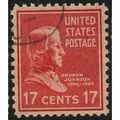Bournemouth, Dorset - bay, pier, beach, storm - fine Fred Judge art postcard
- Condition : Used
- Dispatch : 2 Days
- Brand : None
- ID# : 128323327
- Quantity : 1 item
- Views : 587
- Location : United Kingdom

- Seller : justthebook (+1699)
- Barcode : None
- Start : Mon 19 May 2014 15:16:30 (EDT)
- Close : Run Until Sold
- Remain : Run Until Sold
Checks/Cheques
 for 1 item(s) edit
for 1 item(s) edit
Shipping Calculator
More Listings from This Seller view all
Seller's Description
- Postcard
- Picture / Image: Bournemouth Bay, Dorset - shows pier, beach and looks like a gathering storm - art postcard by Fred Judge
- Publisher: Judges of Hastings
- Postally used: no
- Stamp: n/a
- Postmark(s): n/a
- Sent to: n/a
- Notes / condition:
Please ask if you need any other information and I will do the best I can to answer.
Image may be low res for illustrative purposes - if you need a higher definition image then please contact me and I may be able to send one.
------------------------------------------------
Postage & Packing:
UK (incl. IOM, CI & BFPO): 99p
Europe: £1.60
Rest of world (inc. USA etc): £2.75
No additional charges for more than one postcard. You can buy as many postcards from me as you like and you will just pay the fee above once. (If buying postcards with other things such as books, please contact or wait for invoice before paying).
Payment Methods:
UK - PayPal, Cheque (from UK bank) or postal order
Outside UK: PayPal ONLY (unless otherwise stated) please. NO non-UK currency checks or money orders (sorry).
NOTE: All postcards are sent in brand new stiffened envelopes which I have bought for the task. These are specially made to protect postcards and you may be able to re-use them. In addition there are other costs to sending so the above charge is not just for the stamp!
I will give a full refund if you are not fully satisfied with the postcard.
----------------------------------------------
Text from the free encyclopedia WIKIPEDIA may appear below to give a little background information (internal links may not work) :
*************
Bournemouth ![]() i/'b??rnm??/ is a large coastal resort town on the south coast of England directly to the east of the Jurassic Coast, a 95-mile (153 km) World Heritage Site. According to the 2011 census, the town has a population of 183,491, making it the largest settlement in Dorset. With Poole to the west and Christchurch in the east, Bournemouth forms the South East Dorset conurbation, which has a total population of over 400,000.
i/'b??rnm??/ is a large coastal resort town on the south coast of England directly to the east of the Jurassic Coast, a 95-mile (153 km) World Heritage Site. According to the 2011 census, the town has a population of 183,491, making it the largest settlement in Dorset. With Poole to the west and Christchurch in the east, Bournemouth forms the South East Dorset conurbation, which has a total population of over 400,000.
Before it was founded in 1810 by Lewis Tregonwell, the area was a deserted heathland occasionally visited by fisherman and smugglers. Initially marketed as a health resort, the town received a boost when it appeared in Dr Granville's book, The Spas of England. Bournemouth's growth really accelerated with the arrival of the railway and it became a recognised town in 1870. Historically part of Hampshire, it joined Dorset with the reorganisation of local government in 1974. Since 1997, the town has been administered by a unitary authority, giving it autonomy from Dorset County Council although it remains however part of the ceremonial county. The local council is Bournemouth Borough Council.
The town centre has notable Victorian architecture and the 202 feet (62 m) spire of St Peter's Church, one of three Grade I listed churches in the borough, is a local landmark. Bournemouth's location has made it a popular destination for tourists, attracting over five million visitors annually with its beaches and popular nightlife. The town is also a regional centre of business, home of the Bournemouth International Centre or BIC, and a financial sector
The first record of Bournemouth as a place name was in the Christchurch cartulary of 1407, when a monk noted a stranded whale at ""La Bournemowthe""; a purely geographical reference to the uninhabited area around the mouth of the small river that drained the heathland between the towns of Poole and Christchurch.[1][2][3] The word bourne, meaning a small stream, is a derivative of burna, old English for a brook.[2][4] From the latter half of the 16th century ""Bourne Mouth"" seems to be preferred, being recorded as such in surveys and reports of the period, but this appears to have been shortened to ""Bourne"" after the area had started to develop.[2][3] A travel guide published in 1831 calls the place ""Bourne Cliffe"" or ""Tregonwell's Bourne"" after its founder.[5]The Spas of England, published ten years later, calls it simply, ""Bourne""[6] as does an 1838 edition of the Hampshire Advertiser.[7] In the late 18th century ""Bournemouth"" became predominant, although its two-word form appears to have remained in use up until at least the early 20th century, turning up on a 1909 ordnance map.[1][8]
In the 12th century the region around the mouth of the River Bourne was part of the Hundred of Holdenhurst. The hundred later became the Liberty of Westover when it was also extended to include the settlements of North Ashley, Muscliff, Muccleshill, Throop, Iford and Tuckton, and incorporated into the Manor of Christchurch.[9] Although the Dorset and Hampshire region surrounding it had been the site of human settlement for thousands of years, Westover was largely a remote and barren heathland before 1800.[10] In 1574, the Earl of Southampton noted that the area was, ""Devoid of all habitation"" and, as late as 1795, the Duke of Rutland recorded that ""... on this barren and uncultivated heath there was not a human to direct us"".[2][11]
In the late 19th and early 20th centuries the Borough of Bournemouth would grow to encompass a number of ancient settlements along the River Stour, including Longham, where a skull thought to be 5,500 years old was found in 1932. Bronze Age burials near Moordown, and the discovery of Iron Age pottery on the East Cliff in 1969 suggest there may have been settlements there during that period. Hengistbury Head, added to the borough in 1930, was the site of a much older Palaeolithic encampment.[12][13][14] During the latter half of the 16th century, James Blount, 6th Baron Mountjoy began mining for alum in the area, and at one time part of the heath was used for hunting, although by the late 18th century little evidence of either event remained.[15][16] No-one lived at the mouth of the Bourne river and the only regular visitors to the area before the 19th century were a few fishermen, turf cutters and gangs of smugglers.[17]
Prior to the Christchurch Inclosures Act 1802, more than 70% of the Westover area was common land. The act together with the Inclosure Commissioners' Award of 1805 transferred five thousands acres into the hands of five private owners including James Harris, 1st Earl of Malmesbury and Sir George Ivison Tapps.[18][19] In 1809, the Tapps Arms public house appeared on the heath. A few years later, in 1812, the first official residents, retired army officer Lewis Tregonwell and his wife, moved into their new home built on land purchased from Tapps. The area was well known to Tregonwell who, during the Napoleonic wars, spent much of his time searching the heath and coastline for French invaders and smugglers.[20]
Anticipating that people would come to the area to indulge in the newly fashionable pastime of sea-bathing, an activity with perceived health benefits, Tregonwell built a series of villas on his land between 1816 and 1822, which he hoped to let out.[21][22] The common belief that pine scented air was good for lung conditions, and in particular tuberculosis, prompted Tregonwell and Tapps to plant hundreds of pine trees. These early attempts to promote the town as a health resort meant that by the time Tregonwell had died in 1832, Bournemouth had grown into a small community with a scattering of houses, villas and cottages.[21][23] The town would ultimately grow up around the scattered pines and tree-lined walk to the beach, later to become known as the Invalids' Walk.[24][25]
In 1835, after the death of Tapps, his son Sir George William Tapps-Gervis inherited his father's estate. He hired the young, local architect, Benjamin Ferrey to develop the coastal area on the east side of the stream.[26] Bournemouth's first hotel, later to become part of the Royal Bath Hotel, opened in 1838 and is one of the few buildings designed by Ferrey still standing.[23][26] Bournemouth started to grow at a faster rate as Tapps-Gervis began developing the area similar to the south coast resorts of Weymouth and Brighton. Despite enormous investment, the town's share of the market remained modest.[24] In 1841, Tapps-Gervis invited the physician and writer Augustus Granville to stay. Granville was the author of The Spas of England, which described health resorts around the country, and as a result of his visit, he included a chapter on Bournemouth in the second edition of his book. The publication of the book and the increase in visitors seeking the medicinal use of seawater and the pine scented air, helped the town to grow and establish itself as an early tourist destination.[27][28]
type=printed postcards
theme=topographical: british
sub-theme=england
county/ country=dorset
number of items=single
period=post war (1945 - present)
postage condition=unposted
Listing Information
| Listing Type | Gallery Listing |
| Listing ID# | 128323327 |
| Start Time | Mon 19 May 2014 15:16:30 (EDT) |
| Close Time | Run Until Sold |
| Starting Bid | Fixed Price (no bidding) |
| Item Condition | Used |
| Bids | 0 |
| Views | 587 |
| Dispatch Time | 2 Days |
| Quantity | 1 |
| Location | United Kingdom |
| Auto Extend | No |










![Jareth Labyrinth Black Round Watch [38713062]](https://pic.ebid.net/upload_small/1/0/1/1562677263-12827-22.jpg)









